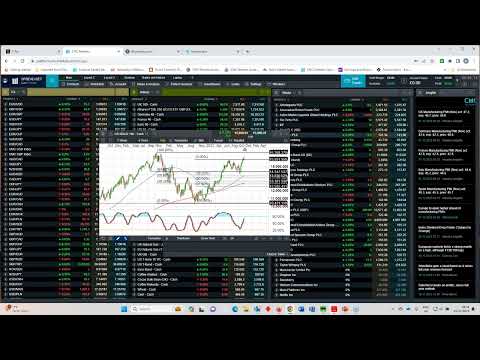Here's our pick of the top three economic and company events in the week commencing Monday 4 December:
Reserve Bank of Australia rate meeting
Tuesday 5 December: In November the RBA diverged from its peers and raised interest rates again, lifting its cash rate by 25 basis points to a 12-year high of 4.35%, having kept its benchmark rate at 4.1% for the previous five months. In a sign that the latest increase could be the RBA’s last of the current tightening cycle, the central bank tweaked its guidance. Out went “further monetary tightening may be required”, and in came speculation “whether monetary tightening may be required”. Although that subtle modification sent the Australian dollar lower, recent weakness in the US dollar has helped spur the Aussie’s recovery. Despite evidence that inflation is slowing around the world, the RBA clearly felt it necessary to close the gap on its peers in terms of rate policy. Policymakers were perhaps also concerned about domestic price pressures. Recently there has been good news for the Australian economy. Data from China, a key customer of Australian raw materials, suggest that efforts by the government in Beijing to stimulate the economy are bearing fruit, although the improvements have been modest. Furthermore, Australia’s consumer price index (CPI) rose a lower-than-expected 4.9% in the year to October, easing from 5.6% in September, and second-quarter GDP grew 0.4%, beating expectations of 0.2% growth. With the economy remaining resilient, the RBA is likely to keep rates unchanged on Tuesday. However, some ex-RBA staffers have suggested that rates could rise again if wage growth remains strong.
GameStop Q3 results
Wednesday 6 December: Although the GameStop share price leapt 20% overnight from Tuesday to Wednesday amid a flurry of retail trading activity, the theme of the last six months has been one of decline, with the stock falling more than 40% from the mid-June highs. The shares rose to a seven-month high in June after the video game retailer posted a surprise quarterly profit at the end of last year, boosted by the sale of digital assets for $4.5m. The company has succeeded in cutting costs and withdrawing from non-core markets, but has also made some poor decisions, perhaps most notably the partnership with failed crypto exchange FTX. The business also tried diversifying into NFTs just as the bottom was falling out of that market. GameStop reported a loss of $50.5m, or $0.14 a share, in Q1 as net sales fell short of estimates at $1.24bn. The second quarter brought a slight improvement, with revenue rising to $1.16bn and losses narrowing to $0.03 a share. For Q3, expectations are for revenue to come in roughly unchanged at $1.18bn, with losses at $0.08 a share.
US non-farm payrolls (November)
Friday 8 December: The US jobs report for October marked the first time this year that the number of jobs added came in below market expectations. Mind you, the miss was not big enough to raise any serious concerns over the country’s economic resilience. The US economy added 150,000 jobs in October, below expectations of 180,000, and a sharp decrease on the downwardly revised September figure of 297,000. The unemployment rate ticked higher to 3.9% in October, up from 3.8% in September, in a sign that the US economy is cooling in a manner that will please the US Federal Reserve. A similarly weak jobs report from payroll processing firm ADP showed that growth slowed to 113,000 new jobs in October. Meanwhile, the recent ISM services survey indicated that activity softened in October. All of this is leading markets to expect that US interest rates have peaked. Attention is now shifting to the question of when to expect rate cuts. Managing expectations is therefore the next big challenge for the US central bank as it seeks to press home its “higher for longer” message on rates. It’s worth noting that job vacancies remain at elevated levels of 9.55m, according to the job openings and labor turnover (JOLTS) survey, while new jobless claims continue to trend at around 210,000 a week, suggesting that the Fed still has plenty of leeway to push back on market expectations of rate cuts. Returning to non-farm payrolls, economists estimate that the US economy added 200,000 jobs in November, though many of these new positions are likely to have been seasonal hires ahead of Thanksgiving and Christmas. Thus, we’re unlikely to see any major cracks emerge in the US labour market this side of 2024.
Here's our pick of the week's other economic and company events:
Services PMIs (November)
Tue 5 Dec: While sentiment towards manufacturing activity in Europe appears to be bottoming out, the same can’t be said for the services sector, which is experiencing sticky levels of inflation. In response, the European Central Bank is continuing to spin a hawkish narrative on rates, despite evidence that the eurozone economy is in contraction territory. Recent data from France showed economic activity contracted in Q3, with little sign of improvement so far in Q4. The country’s October services purchasing managers’ index (PMI) reading came in at 45.3, indicating contraction. The UK reading for the same month signalled greater resilience as its services PMI rose from 49.5 to 50.5, edging into expansion territory. Readings from Spain and Italy for October fell to 51.1 and 47.7, respectively, as the tourism season wound down.
Bank of Canada rate meeting
Wed 6 Dec: Economists aren’t expecting any major changes to monetary policy from the Bank of Canada, which is set to keep interest rates unchanged at 5%. The last three months have seen no growth in the economy at all. In October the labour market added 17,500 part-time jobs, while the number of full-time jobs contracted by 3,300 roles, the first decline since May. The unemployment rate rose from 5.5% to 5.7%, the highest level since January 2021. Meanwhile inflationary pressures continue to ease, with CPI Median decreasing to 3.6% in October, down from 3.9% in September.
China trade balance (November)
Thu 7 Dec: China’s GDP grew 4.9% year-on-year in Q3, above forecasts of 4.6%, signalling a pick-up in economic activity. The October trade numbers supported this idea of a modest improvement, though domestic demand remained subdued. In October, imports to China grew 3% year-on-year, beating forecasts of a 5% decrease and ending a run of seven consecutive months of declines. However, exports from China fell 6.4% year-on-year, the sixth month in a row that exports have been down and a worrying sign that global demand remains weak. It is unlikely to pick up soon.
Balfour Beatty Q3 trading update
Thu 7 Dec: Shares of the FTSE 250-listed infrastructure group are down 4% this year, even though in May they hit their highest levels since June 2008. In August the shares took a tumble, despite the company reporting that first-half revenue grew 9% to £4.5bn and underlying pre-tax profit increased to £97m. The share price weakness appeared to be driven by concerns over the order book, which shrank again in Q2 and, at £16.4bn, is £1bn lower than it was at the end of last year. Margins tightened in support services, weighing on profitability. There was also disappointment that full-year guidance was left unchanged. The cancellation of the Birmingham-to-Manchester leg of HS2 also dented investor sentiment, given that Balfour Beatty was a key contractor in the project. This setback may be offset if the company gets a slice of east-west transport improvements across the Pennines.
Frasers Group half-year results
Thu 7 Dec: Frasers Group’s share price has climbed more than 20% this year, despite the challenges facing UK retailers. When the company reported its full-year numbers for 2023 back in July, the Sports Direct owner reported a 15.8% increase in revenue to £5.56bn, despite gross margin slowing modestly to 42.6% from 43.8% a year earlier. Sports retail performed particularly well, with a 16.7% rise in revenue. There was also strong growth in the premium lifestyle division, helped by the opening of new Flannels stores. With the addition of Gieves and Hawkes and Amara Living, management expect further strong growth in this area. The company has also made further strategic investments in the likes of Boohoo and ASOS over the past six months, adding to a retail portfolio which also includes stakes in AO World and Currys. Operating costs rose to £1.93bn, but profit on property sales helped to offset the hit. Reported profit after tax rose to £501.3m. For full-year 2024, Frasers Group said it expects adjusted profit before tax to be in the range of £500m to £550m.
Broadcom Q4 results
Thu 7 Dec: Semiconductor and software company Broadcom has seen its shares soar by over two-thirds this year. The stock hit a record high of almost $1,000 a share in November, after breaking above the previous record high of $925 in October. In Q3 Broadcom reported revenue of $8.88bn and a profit of $10.54 a share. Chip sales accounted for $6.94bn of the revenue figure. In the aftermath of those results, the shares dipped a little as the chip maker projected Q4 revenue of $9.27bn, which, while a record sum, prompted some profit-taking. Nonetheless, the dip proved to be short-lived as optimism over AI-related sales brought buyers back in. Even a delay in completing its $70bn merger with VMWare failed to take the shine off the shares. That deal finally completed last month after Chinese regulators approved the deal, subject to conditions. Full-year revenue is expected to come in at $35.8bn, with a profit of $42.13 a share. Semiconductor sales are forecast to rise to $27.79bn, up from $25.8bn.
DocuSign Q3 results
Thu 7 Dec: Shares of DocuSign slipped below $40 at the end of October, their lowest level since November 2018. Despite an improving revenue and profit outlook, the shares have struggled this year, falling by almost a quarter. There was a slight uptick in November as the stock rallied to $43, but the shares have remained well below their September peaks of $53. In September, when the company reported its Q2 numbers, the shares fell sharply despite an 11% increase in revenue to $687.7m, comfortably beating guidance, while profit came in at $0.72 a share As at the end of Q2, management again upgraded their guidance, projecting Q3 revenue of $687m to $691m. Bosses also raised their full-year revenue forecast to between $2.73bn and $2.74bn. Profit in Q3 is forecast to come in at $0.63 a share.
INDEX DIVIDEND SCHEDULE
Dividend payments from an index's constituent shares can affect your trading account. View this week's index dividend schedule.
SELECTED COMPANY RESULTS
| Monday 4 December | Results |
| Gitlab (US) | Q3 |
| SDCL Energy Efficiency Income Trust (UK) | Half-year |
| Tuesday 5 December | Results |
| Ashtead Group (UK) | Q2 |
| AutoZone (US) | Q1 |
| Dave & Buster's Entertainment (US) | Q3 |
| DiscoverIE Group (UK) | Half-year |
| Marston's (UK) | Full-year |
| Moonpig Group (UK) | Half-year |
| On the Beach Group (UK) | Full-year |
| Oxford Metrics (UK) | Full-year |
| Premier Miton Group (UK) | Full-year |
| Rent the Runway (US) | Q3 |
| Wednesday 6 December | Results |
| Barnes & Noble Education (US) | Q2 |
| Braze (US) | Q3 |
| Brown-Forman (US) | Q2 |
| Campbell Soup (US) | Q1 |
| Chewy (US) | Q3 |
| GameStop (US) | Q3 |
| Oxford Industries (US) | Q3 |
| Paragon Banking Group (UK) | Full-year |
| Redde Northgate (UK) | Half-year |
| Veeva Systems (US) | Q3 |
| Thursday 7 December | Results |
| AJ Bell (UK) | Full-year |
| Balfour Beatty (UK) | Q3 |
| Broadcom (US) | Q4 |
| Ciena (US) | Q4 |
| DocuSign (US) | Q3 |
| Dollar General (US) | Q3 |
| DS Smith (UK) | Half-year |
| Frasers Group (UK) | Half-year |
| Future (UK) | Full-year |
| Smith & Wesson Brands (US) | Q2 |
| Watches of Switzerland Group (UK) | Half-year |
| Friday 8 December | Results |
| Berkeley Group Holdings (UK) | Half-year |
| Johnson Outdoors (US) | Q4 |
Note: While we check all dates carefully to ensure that they are correct at the time of writing, company announcements are subject to change.
Disclaimer: CMC Markets is an execution-only service provider. The material (whether or not it states any opinions) is for general information purposes only, and does not take into account your personal circumstances or objectives. Nothing in this material is (or should be considered to be) financial, investment or other advice on which reliance should be placed. No opinion given in the material constitutes a recommendation by CMC Markets or the author that any particular investment, security, transaction or investment strategy is suitable for any specific person. The material has not been prepared in accordance with legal requirements designed to promote the independence of investment research. Although we are not specifically prevented from dealing before providing this material, we do not seek to take advantage of the material prior to its dissemination.




